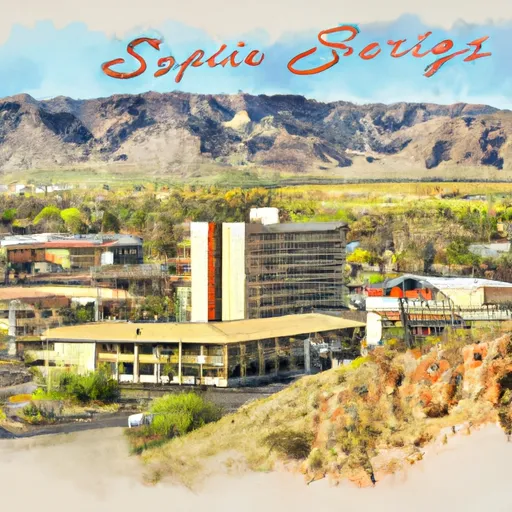-
 Snoflo Premium
Snoflo Premium
Get unlimited access to all our content
With no Ad interruptions! - Start Your Free Trial Login with existing account
Rock-Springs
Eden Index
Climate
9.0
•
Recreation
7.0
•
Community
1.4
•
Safeguard
6.4/10

Rock Springs, Arizona, is a small unincorporated community located in the northern part of the state. It experiences a semi-arid climate with hot summers and mild winters. Summers are characterized by high temperatures reaching the 90s°F (30s°C) and occasional monsoon rains. Winters are relatively mild, with temperatures ranging from the 40s°F (5-10°C) during the day to freezing temperatures at night.
Hydrology constituents in Rock Springs are primarily focused on the Verde River, which flows nearby. The river offers opportunities for various water activities like fishing, swimming, and kayaking. Additionally, there are several natural springs in the area, providing scenic views and potential water sources for outdoor enthusiasts.
Rock Springs is surrounded by picturesque landscapes, making it an excellent destination for outdoor recreation. The nearby Tonto National Forest offers numerous hiking trails, camping spots, and opportunities for wildlife viewing. Visitors can explore the unique rock formations of the Mogollon Rim or enjoy the serenity of the surrounding desert. Overall, Rock Springs provides an ideal setting for outdoor enthusiasts seeking a mix of water-based activities and exploration of Arizona's natural beauty.
What is the Eden Index?
The Snoflo Eden Index serves as a comprehensive rating system for regions, evaluating their desirability through a holistic assessment of climate health, outdoor recreation opportunities, and natural disaster risk, acknowledging the profound impact of these factors on livability and well-being.
Climate Health Indicator (CHI): 9.0
Rock-Springs receives approximately
388mm of rain per year,
with humidity levels near 46%
and air temperatures averaging around
20°C.
Rock-Springs has a plant hardyness factor of
9, meaning
plants and agriculture in this region tend to thrive here all year round.
By considering the ideal temperature range, reliable water supplies, clean air, and stable seasonal rain or snowpacks, the Climate Health Indicator (CHI) underscores the significance of a healthy climate as the foundation for quality living.
A healthy climate is paramount for ensuring a high quality of life and livability in a region, fostering both physical well-being and environmental harmony. This can be characterized by ideal temperatures, reliable access to water supplies, clean air, and consistent seasonal rain or snowpacks.
Weather Forecast
Streamflow Conditions
Lower Gila-Agua Fria
Area Rivers
Lower Gila-Agua Fria
Snowpack Depths
Lower Gila-Agua Fria
Reservoir Storage Capacity
Lower Gila-Agua Fria
Groundwater Levels
Recreational Opportunity Index (ROI): 7.0
The Recreational Opportunity Index (ROI) recognizes the value of outdoor recreational options, such as parks, hiking trails, camping sites, and fishing spots, while acknowledging that climate plays a pivotal role in ensuring the comfort and consistency of these experiences.
Access to outdoor recreational opportunities, encompassing activities such as parks, hiking, camping, and fishing, is crucial for overall well-being, and the climate plays a pivotal role in enabling and enhancing these experiences, ensuring that individuals can engage in nature-based activities comfortably and consistently.
Camping Areas
| Campground | Campsites | Reservations | Toilets | Showers | Elevation |
|---|---|---|---|---|---|
| Kentuck Springs | 15 | 6,016 ft | |||
| Thousand Trails Rd Dispersed | None | 3,461 ft | |||
| Powell Springs | 10 | 5,301 ft | |||
| Cave Creek Rec Area | 38 | 1,935 ft | |||
| Agua Fria National Monument Dispersed | None | 3,186 ft | |||
| Hazlett Hollow | 15 | 5,947 ft |
Catastrophe Safeguard Index (CSI):
The Catastrophe Safeguard Index (CSI) recognizes that natural disaster risk, encompassing floods, fires, hurricanes, and tornadoes, can drastically affect safety and the overall appeal of an area.
The level of natural disaster risk in a region significantly affects safety and the overall livability, with climate change amplifying these risks by potentially increasing the frequency and intensity of events like floods, fires, hurricanes, and tornadoes, thereby posing substantial challenges to community resilience and well-being.
Community Resilience Indicator (CRI): 1.4
The Community Resilience Indicator (CRI) recognizes that education, healthcare, and socioeconomics are crucial to the well-being of a region. The CRI acknowledges the profound impact of these elements on residents' overall quality of life. By evaluating educational resources, healthcare accessibility, and economic inclusivity, the index captures the essential aspects that contribute to a thriving community, fostering resident satisfaction, equity, and social cohesion.

